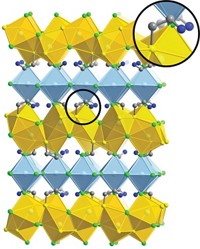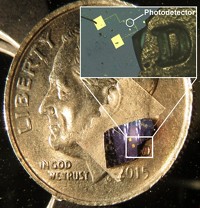Advertisement
Grab your lab coat. Let's get started
Welcome!
Welcome!
Create an account below to get 6 C&EN articles per month, receive newsletters and more - all free.
It seems this is your first time logging in online. Please enter the following information to continue.
As an ACS member you automatically get access to this site. All we need is few more details to create your reading experience.
Not you? Sign in with a different account.
Not you? Sign in with a different account.
ERROR 1
ERROR 1
ERROR 2
ERROR 2
ERROR 2
ERROR 2
ERROR 2
Password and Confirm password must match.
If you have an ACS member number, please enter it here so we can link this account to your membership. (optional)
ERROR 2
ACS values your privacy. By submitting your information, you are gaining access to C&EN and subscribing to our weekly newsletter. We use the information you provide to make your reading experience better, and we will never sell your data to third party members.
Energy
New Lattices For Silicon Solar Cells
Novel silicon crystal arrangements predicted via computational studies could help boost solar-cell efficiency
by Matt Davenport
July 14, 2014
| A version of this story appeared in
Volume 92, Issue 28

Materials scientists backed by computer simulations have identified several silicon lattice arrangements that are predicted to be more efficient at converting sunlight to electricity than are the cubic diamond structures typically employed in crystalline silicon solar cells (J. Am. Chem. Soc. 2014, DOI: 10.1021/ja5035792). Some of the most efficient solar modules on the market rely on silicon’s diamondlike allotrope. But these crystals harbor an inherent inefficiency: an indirect band gap. Incident light shining on the solar cells needs an assist from lattice vibrations, or phonons, to excite charge carriers to the material’s conduction band and generate an electric current. Julong He of China’s Yanshan University and his coworkers identified six different silicon geometric crystal arrangements (three shown) with direct or quasidirect band gaps that should produce a photocurrent without phonons. In addition, the team’s simulations revealed that the crystals should be stable at room temperature, and five of them should survive beyond 700 °C, which the researchers believe is further cause for optimism. Actually fabricating these structures is the next challenge, but scientists have already developed techniques for packaging group 14 elements into various crystalline configurations, He says.





Join the conversation
Contact the reporter
Submit a Letter to the Editor for publication
Engage with us on Twitter